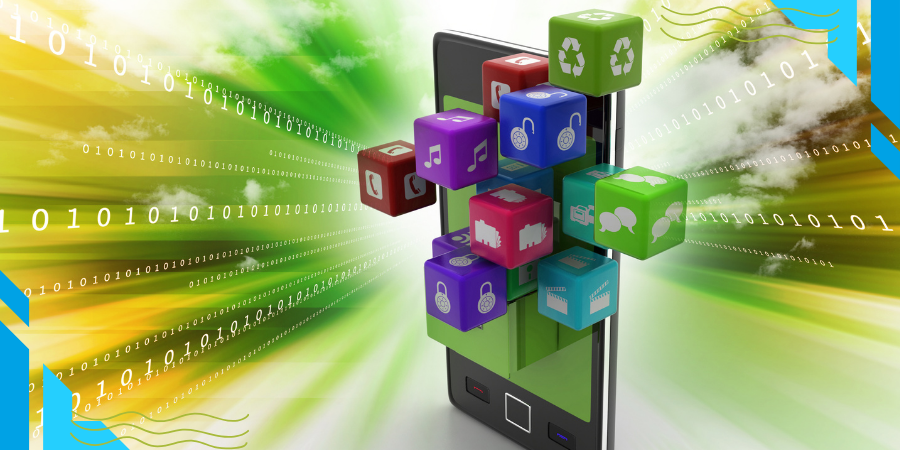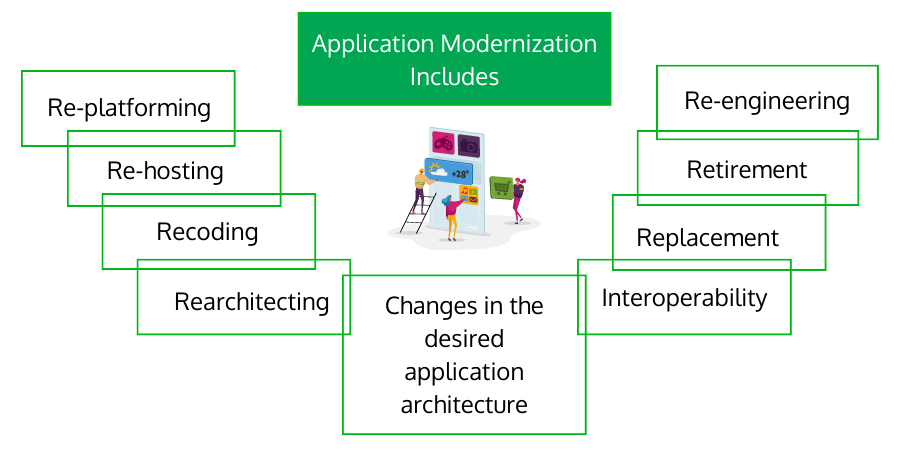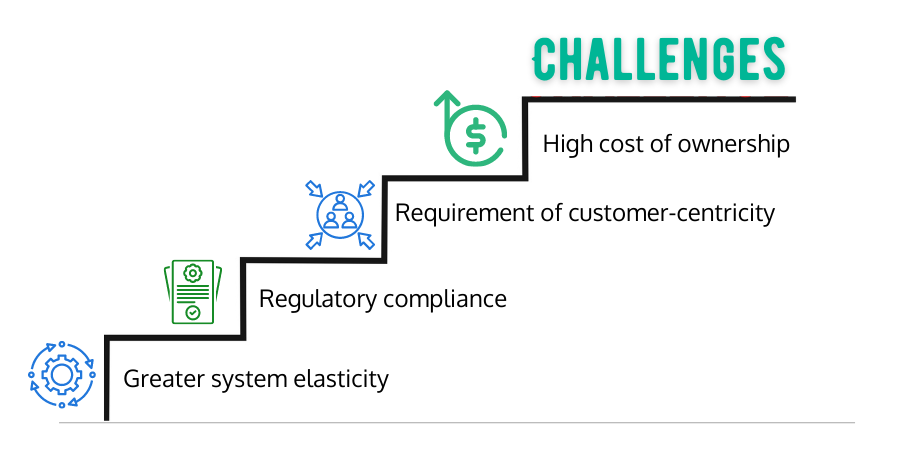
The digital world has opened many opportunities for businesses to operate in a more dynamic environment. It has ushered in an era of innovation driven by consumerization, relentless disruption, and the advent of niche players across verticals. With the growing need for business agility, security, and scalability, enterprises have inclined towards digital disruptions.
Enterprises have abundant applications and digital capabilities essential for tried-and-tested industrial strength. But these apps are constrained by legacy IT infrastructure and need to be modernized to align with current business needs.
Modernization is no longer optional;
Modernization without disruption is possible;
Modernization of legacy applications- reimagine legacy;
For a business to thrive today, it is significant to opt for application modernization allowing companies to innovate at unprecedented speed and scale.
Understanding Application Modernization
A legacy application is essentially an information system based on outdated technologies but critical for daily business operations.
Modernization essentially repurposes the existing infrastructure (system) using the latest technologies.

Application modernization is taking the legacy applications and modernizing their features, internal architectures, and platforms to scalable, cloud-native environments using modern technology stacks. Application modernization includes re-platforming, re-hosting, recoding, rearchitecting, re-engineering, interoperability, replacement and retirement, and changes in the desired application architecture.
Application modernization increases the speed at which new features are delivered. It re-platforms existing apps from on-prem to the cloud for application scalability and performance. It unlocks functionalities to be used for other services via APIs.
A practical application modernization strategy is selecting modernization projects where advantages of cloud, speed, performance, scale, and new feature development, provide a clear route to improved customer experience and ROI.
Software technologies are getting fine-tuned and implemented steadily. Modernizing legacy apps is critical as it gives businesses the agility and capability to react to dynamic market changes. However, some enterprises are thriving on modernizing applications and leveraging rapid technological innovations while matching digitalization demands.
Why Modernize Your Legacy System?
Legacy applications are often monolithic or on-prem. They are difficult to update and scale while being complex and expensive. These are standalone; it’s hard to integrate with other apps.
Monolithic apps are challenging to update due to architectural complexities. Since all the application's components are shipped together, adding functionality, overhead complexity, and integration issues are challenging and expensive.
Monolithic apps are expensive to scale for similar reasons. If any component of the app experiences any load or performance issues, the entire app may need to scale up to handle the demanding components. This approach is huge, time-intensive, and resource-consuming. For these reasons, many businesses have decided to update their apps to a more microservices-based architecture. Components can be deployed and scaled independently as they are smaller and loosely coupled. However, application modernization is complicated and has its own set of challenges.

Some challenges involved:
- High cost of ownership and the demographic fact that there are fewer skilled talents available for legacy, or outdated technologies.
- Requirement of customer-centricity for the seamless delivery of multi-channel capabilities.
- Regulatory compliance.
- Greater system elasticity to support growth and leverage pay per consumption.
Benefits of Application Modernization
Application modernization can help you to:
- Switch to more efficient and scalable systems in the cloud by eliminating the limitations of conventional monolithic system architectures having limited flexibility and operability.
- Construct new applications more quickly and affordably in a secured environment with huge platform portability, including cloud-, on/off-prem environments.
- Combine formerly decoupled apps into a simplified and integrated implementation.
- Employ modernized apps that are effective, efficient, and suitable for new hires, partners, customer processes, and operational models.
- Maintain and leverage existing applications satisfying current business needs and adhering to market trends and changes.
- Boost the productivity of your employees and increase their motivation and satisfaction while working with the latest tools and technologies.
- Modernize and strengthen your security posture in response to legacy architecture as modernized apps are now compatible with current security standards, procedures, and laws.
- Enable implementation of new, purpose-built features and services meeting your present and future business objectives.
- Provide a solid competitive edge by increasing compatibility and revenue streams and fostering long-term organizational growth while reducing technical debt.

5Rs Approach for Application Modernization
There is no ‘one approach for all’. You can select according to your legacy architecture updates or existing apps performance:
Rehost
Using this approach, you can move the application components to any cloud platform, including Azure, Oracle, Google, or AWS, without modifying code, features, and functions. Use this approach to lift and shift quickly. You can also consider the rehost approach if no modifications to the architecture or code are required or when there is no risk and cost associated with code modifications.
Refactor
It includes restructuring & optimizing existing code to eliminate the technical debt & improve the component’s features.
It is ideal if you want applications that can rapidly adapt to changes with huge availability and apply innovative DevOps practices provided by any cloud platform.
Rearchitect
Modify the application code to switch to a new architecture leveraging improved capabilities. It can be used to deploy existing application improvements while incorporating new capabilities, increase agility using DevOps techniques, and use Azure capabilities with current apps for greater scalability.
Rebuild
Involves rebuilding or rewriting application components from scratch with cloud-native platforms.
You can opt for this approach for building new applications - rapid development using cloud-native technologies alongside incorporating edge technologies such as AI, IoT, and RPA into applications.
Replace
Involves replacing application components with other components or new applications with similar functionalities.
You can select it if you want minimal administrative overhead, replace the legacy app with a more adaptive and flexible cloud-based app, or replace it with SaaS software.

 Batoi Corporate Office
Batoi Corporate Office